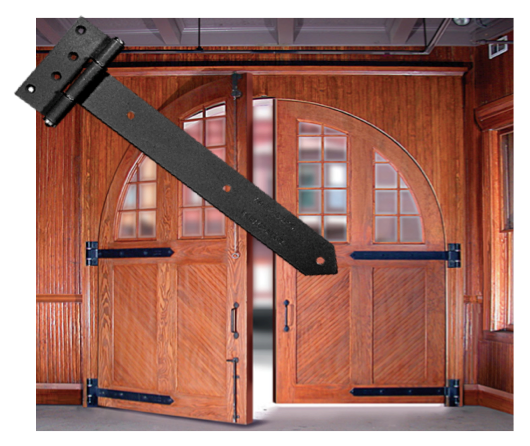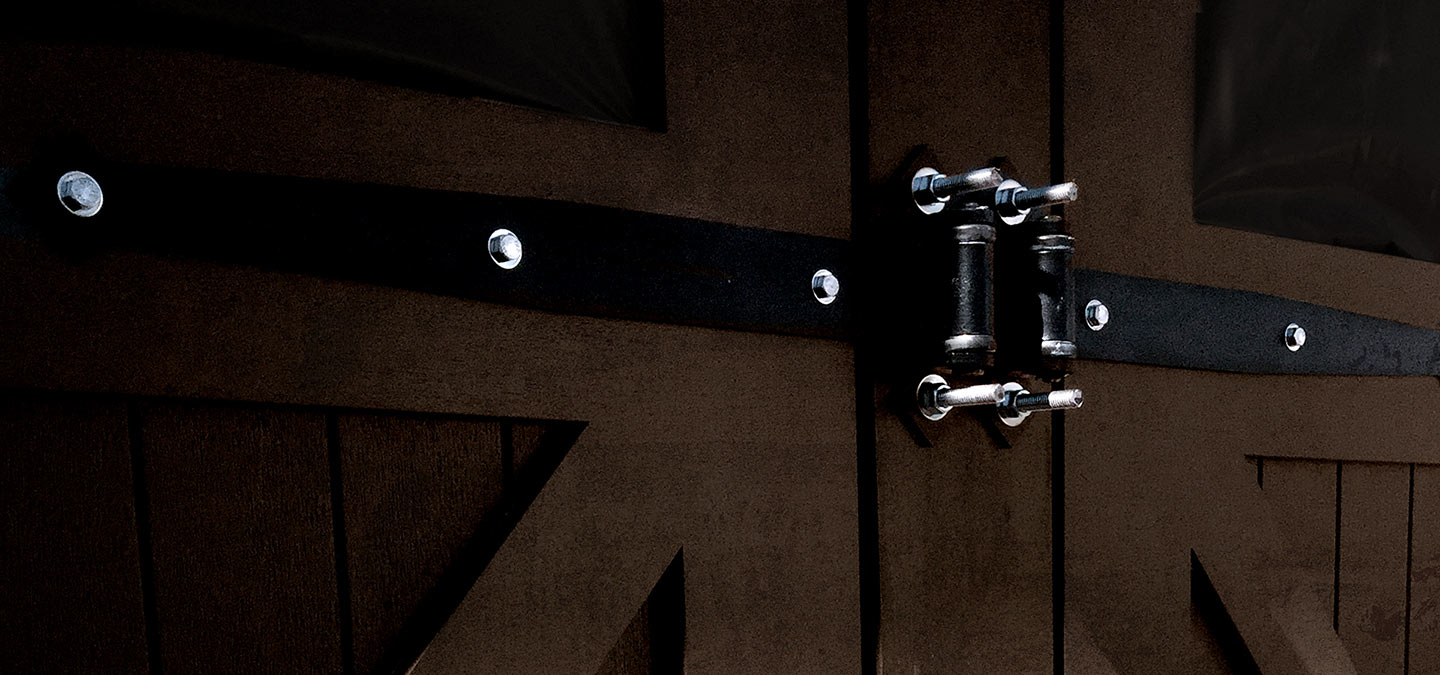Swinging doors have long stood as a testament to timeless architectural brilliance, seamlessly blending elegance with functionality. Their effortless motion provides convenient access, ensuring a blend of design and utility. When paired with top-tier swinging door hardware, these doors gain remarkable durability, standing strong against the test of time and use.

However, the true essence of a swinging door’s durability and efficiency hinges on one critical aspect — the hardware. The right swinging door hardware doesn’t just complement the door; it elevates it, ensuring its beauty is matched by its performance.
The mechanics of swinging door hardware are fundamental to the functionality, security, and durability of doors. Understanding the mechanics of this hardware is a cornerstone for perfect installation. Read on as we demystify the mechanics behind swinging door hardware and highlight why investing in high-quality components like those from RW Hardware is necessary for security, durability, and seamless operation.
How Swinging Door Hinges Work
Door hinges are the mechanical bearings that connect a door to its frame. These hinges serve as pivotal points, allowing for the rotational movement of the door as it opens and closes. They are typically made from durable materials like brass, steel, or stainless steel to ensure longevity and facilitate rotary movements between the door and frame.
Hinges function through a combination of simple mechanical principles. They are essentially a series of wheels and axles, also acting as levers, to support the door’s weight and movement. This clever design eliminates the need for excessive force to open or close the door.
To distribute the door’s weight and reduce strain, doors are often fitted with multiple hinges. This not only extends the life of the hinge by reducing torque on each screw but also minimizes the door’s tendency to wiggle. This stability is crucial in preventing frictional damage to both the door and its frame and in keeping the screws securely in place.
The Mechanics of Double-Action Hinges
Double-action hinges, often used in industrial swinging doors, allow a door to swing in both directions—inward and outward—and return to a closed position automatically. This unique functionality makes them an ideal choice for doors that see high traffic or need to offer versatile access, such as in kitchens, restaurants, or commercial spaces.
The mechanism of a double-action hinge is based on its dual sets of knuckles located on each leaf of the hinge. Each set of knuckles is responsible for the door’s ability to pivot in one direction.
The hinges consist of two pivot points connected by a spring mechanism. When the door is opened in either direction—whether by hand, arm, or hip—the spring is compressed, storing energy. This stored energy is then released as the door is let go, bringing it back to its central, closed position with ease.
The ability of these hinges to self-center the door adds to the convenience and enhances safety by ensuring the door closes automatically, an essential feature in busy or commercial environments. Additionally, the double-action feature reduces wear on the door frame, as the door can move freely in both directions, mitigating undue stress on any single point. The hinges are also essential for environmental control, especially in warehouses and carriage houses.
The Mechanics of Swinging Door Latches
Swinging door latches ensure a door remains securely closed until deliberately opened. The latches are designed to be user-friendly yet secure, a critical aspect for exterior swinging doors and outswing garage doors. Swinging latches are distinguished by their automatic engagement upon closing the door, offering both convenience and security.
The core mechanism of a swinging latch is its spring-loaded design. Inside the latch, a spring keeps the bolt, the primary locking component, in an extended position. This extended bolt interacts with the door frame to secure the door when it is closed.
The leading edge of the bolt is typically rounded or beveled. This design feature is crucial as it allows the bolt to retract smoothly when it makes contact with the striker plate or catches on the door frame.
As the door is closed, the rounded edge of the bolt encounters the striker plate. The contact and subsequent pressure cause the bolt to retract against the spring tension momentarily.
Once the door is fully shut, the spring pushes the bolt back into its extended position, securing it into a hole or recess in the frame or striker plate. This action effectively locks the door. The automatic locking action eliminates the need for manual latch engagement, a feature particularly useful in high-traffic areas or situations where hands-free operation is desired.
The Long-term Benefits of Investing in Quality Swinging Door Hardware
Investing in high-quality door hardware is not just a matter of aesthetics; it’s a strategic decision that pays off in terms of security, durability, and overall door functionality. Here are a few reasons why you should invest in premium swinging door hardware:
Enhanced Security
Quality door hardware is crucial for ensuring the security of your space. These components’ premium materials and advanced design can better resist wear, tampering, and forced entry, providing a robust first line of defense against security breaches.
Long-Term Durability
The durability of door hardware is directly linked to the quality of its construction. High-grade materials like stainless steel or brass and precision manufacturing ensure that hinges and latches withstand repeated use and harsh environmental conditions without degrading. This longevity saves money in the long run by reducing the need for frequent replacements and therefore ensures consistent performance over the years.
Compatibility with Door Types
Different door types—from heavy-duty industrial doors to elegant residential entryways—require hardware specifically suited to their unique demands. Quality swinging door hardware is often designed with these variations in mind, offering solutions that enhance the functionality and aesthetics of each door type.
For instance, heavy outswing garage doors benefit from robust hinges that can handle the weight, while exterior swinging doors require hardware that can withstand external elements like rain, wind, and extreme temperatures. Interior doors might use more refined, decorative swinging door hardware to prioritize aesthetics and ease of use over ruggedness.
Get Quality Swinging Door Hardware from RW Hardware
Essential swinging door components like hinges and latches play pivotal roles in the door’s functionality. Understanding these mechanisms isn’t just about appreciating engineering; it’s about recognizing their impact on security, durability, and ease of use in everyday life. Whether it’s the smooth swing of a double-action hinge or the secure click of a swinging latch, each element contributes to the seamless operation and safety of doors.
If you’re seeking unparalleled reliability and style, RW Hardware offers a comprehensive selection of swinging door hardware. Whether you’re outfitting a carriage house with decorative hinges or installing swinging garage doors, our range caters to every need.
Visit the RW online shop for a wide array of heavy-duty and decorative swinging and sliding door hardware, including latches, hinges, and accessories. Elevate your doors with RW Hardware, where quality and craftsmanship meet.


